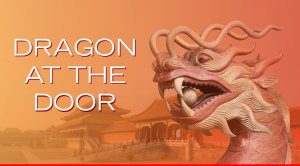 While the world’s attention is fixated on North Korea, it would be imprudent to ignore the other dangerous flashpoint in the Indo-Pacific – the Taiwan Strait, writes J. Michael Cole.
While the world’s attention is fixated on North Korea, it would be imprudent to ignore the other dangerous flashpoint in the Indo-Pacific – the Taiwan Strait, writes J. Michael Cole.
By J. Michael Cole, Jan. 10. 2018
Intensifying activity by the People’s Liberation Army (PLA) and a deepening crisis pitting democratic Taiwan against authoritarian China have ensured that the Taiwan Strait remains one of the most dangerous flashpoints in the Indo-Pacific.
At the heart of the conflict is Beijing’s claims of sovereignty over Taiwan, an island-nation of 23.5 million people that, due to history and its geographical proximity to China, has always been caught in the gravitational pull of its gigantic neighbour. For the Chinese Communist Party (CCP), Taiwan is “unfinished business,” a relic not only of the Cold War, when Nationalist-run Taiwan (officially known as the Republic of China) fell under the US security umbrella in the midst of the Korean War, but also a reminder of China’s humiliation following its defeat in the First Sino-Japanese War. That war concluded in 1895 with the Treaty of Shimonoseki, resulting in Taiwan being ceded to Japan until the Japanese Empire was defeated in World War II.
In its efforts to achieve the “great rejuvenation of the Chinese nation,” the CCP has made the recuperation of Taiwan one of its key objectives. Such goals, however, have been met with stubborn resistance in Taiwan, whose idiosyncratic path – and democratization in the 1980s – meant that its population has little interest in being absorbed by the People’s Republic of China. Such perceptions have only deepened amid clear signs that China under President Xi Jinping is becoming increasingly repressive. CCP cultivated nationalism in Chia, added to the fact that Hong Kong’s liberties have been curtailed following reunification with the Mainland, have further exacerbated opposition to unification. Opinion polls show that only 2.6 percent of Taiwanese support for immediate unification with China, and 13.8 percent favour unification under certain conditions (such as a democratic China). Only 6.7 percent of respondents regard themselves as Chinese. De jure independence is supported by 32 percent, while about 48 percent support the “status quo” (de facto independence).
In its efforts to achieve the “great rejuvenation of the Chinese nation,” the CCP has made the recuperation of Taiwan one of its key objectives.
China’s inability to win over the Taiwanese public has fuelled anger in Beijing and given incentives for the PLA to modernize its force to prepare for an eventual Taiwan contingency. Importantly,the CCP has never abandoned its vow to “retake” Taiwan by force if necessary. Following years of heavy investment and acquisitions (mostly from Russia and Ukraine), sometime in the 2000s the balance of power in the Taiwan Strait shifted in China’s favour. That trend has only continued, compounded by the fact that democratic Taiwan has struggled to increase its defence budget to a minimum of 3 percent of its GDP. Taiwan’s defence budget for 2018 stands at US$10.7 billion; China’s declared budget for 2018 is estimated at US$203.3 billion.
Ambiguous by design, the security umbrella provided by the US has therefore remained a key factor in Taiwan’s existence as a sovereign nation. This, in turn, has become a target of China’s anti-access/area denial (A2/AD) strategy in recent years and one of the key reasons why the PLA has sought to push its presence into the West Pacific in Taiwan’s “rear.”
Faced with an increasingly modern and reorganized opponent, Taiwan has accelerated its increasingly indigenous self-defence program, investing in and fielding an array of “counterforce” capabilities, relying primarily on anti-ship and land-attack cruise missiles (LACM) and various dispersible sea and land platforms. A solid, multi-layered air defence system, comprising US-made PAC-3 batteries and domestically produced Tien Kung systems among others, ensures a modicum of defence against a variety of limited attack scenarios against Taiwan, such a coercive strikes against C4ISR (Command, Control, Communications, Computers, Intelligence, Surveillance and Reconnaissance) centres or decapitation attacks against the political leadership. China threatens Taiwan with an estimated 1,500 short- and medium-range (“Dong Feng”) ballistic missiles, as well as hundreds of land- and air-launched (CJ-10) cruise missiles.
China’s claims of sovereignty over Taiwan are only part of the equation, however, and it would be misleading to regard the PLA as simply serving the function of “retaking” Taiwan. Increasingly, the PLA is being used to position China as a regional power, and to this end it naturally must push beyond the “first island chain,” a line at sea that stretches from the Japanese and Filipino archipelago to the Malay Peninsula, which has kept China bottled in and of which Taiwan is a feature.
China’s claims of sovereignty over Taiwan are only part of the equation, however.
Thus, as it pushes outwards, the PLA Navy and PLA Air Force have had no choice but to navigate in waterways and airspace close to Taiwan (the Bashi Channel and Miyako Strait). Activity in those two transit points – which are international airspace – has increased markedly in recent years, no doubt allowing China to collect intelligence against Taiwan’s military preparedness and exacerbate the coercive value of Beijing’s signalling to the Taiwanese leadership and population. Increased military activity in this sector of the Indo-Pacific (including the South China Sea) may also be a means for China to balance against the possibility of a more robust US presence in the Korean Peninsula, especially if the regime in Pyongyang were taken down by the US and led to an occupation of North Korea.
Despite the balance of power favouring Beijing, internal documents at the PLA (discussed in detail in a recent book by Ian Easton of the Project 2049 Institute) confirm the military consensus that an invasion of Taiwan would be an extraordinarily complex and potentially devastating endeavour. Only 10 percent of Taiwan’s coastal areas are suitable for an amphibious assault needed to take control of the island and Taiwan’s counter-landing measures have been implemented over decades. The 100km-plus transit to cross the Taiwan Strait would give the Taiwanese army, navy and air force several hours to attack Chinese craft.
Moreover, a military assault on Taiwan always comports the risk of triggering involvement by the US, which under the Taiwan Relations Act of 1979 would have an “obligation” to intervene. For all its quantitative improvements, it will be several years yet before the PLA has the ability to directly confront the US military. Additionally, an invasion of Taiwan would potentially have serious reputational costs for Beijing by seriously undermining its claims of a “peaceful rise.” As such, more limited (coercive) action, such as precision strikes or an embargo, are likelier, though their effectiveness in deterring Taiwan is very much in doubt. If the 1995-96 Taiwan Strait Missile Crisis is any indication, such behaviour could very well have the opposite effect by strengthening Taiwanese opposition to China.
Given all this uncertainty, Beijing still regards an invasion of Taiwan as an option of last resort, which it would probably only activate if Taiwan declared de jure independence. That is something the current Taiwan-centric Democratic Progressive Party administration of Tsai Ing-wen will not do. While signalling its intent to use force, Beijing has combined this with major propaganda and political warfare efforts aimed at Taiwan and its allies within the international community, reinforcing notions of historical inevitability and encouraging the abandonment of Taiwan by its principal security guarantor and source of modern weaponry, the US.
The aim of such efforts is to win without a fight, for Taiwan to be completely isolated by the international community, until such a point as its people and leadership feel they have no option but to cut a deal with Beijing (on terms that inevitably would be favourable to the latter). Aggressive espionage efforts targeting the Taiwanese military have also been aimed at gathering intelligence and to reinforce the notion that Taiwan’s security apparatus is unreliable and completely penetrated by China.
Even if Beijing is reluctant to use force against Taiwan, armed clashes involving the two sides – and possibly drawing in the US – could still happen.
Still, the encirclement of Taiwan by the PLA and the unilateral introduction of new air routes by Beijing earlier this month increase the potential for miscommunication and accidents, which is often how wars begin. Therefore, even if Beijing is reluctant to use force against Taiwan, armed clashes involving the two sides – and possibly drawing in the US – could still happen, not by design but inadvertently.
In other more speculative scenarios, pressure from more radical elements within the PLA, or within the CCP in times of crisis in China, could also compel the leadership to use an external distraction to co-opt various factions by fanning the flames of Chinese nationalism. Though weaker adversaries in the South China Sea, such as Vietnam or the Philippines, are more feasible targets for such adventurism, we cannot completely rule out Taiwan as a focal point either.
All this means that conflict in the Taiwan Strait cannot be ruled out. While attention has been riveted by what is happening in North Korea, we all need to be paying close attention to developments further south across the Taiwan Strait in coming years – as what happens there could very well be a fulcrum that will determine the future of the Indo-Pacific in the 21st century.
J. Michael Cole is a Taipei-based senior fellow with the China Policy Institute, University of Nottingham, UK, associate researcher with the French Centre for Research on Contemporary China and chief editor of Taiwan Sentinel. He is a graduate (M.A. War Studies) of the Royal Military College of Canada and was an analyst with the Canadian Security Intelligence Service (CSIS) in Ottawa.




